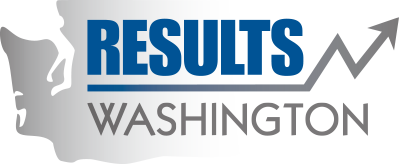Archived: Increase the net statewide acreage dedicated to working farms
Increasing our agricultural land base is necessary to preserve and enhance our state’s agricultural economy, protect our state’s natural resources and ensure we can feed future populations of our state and the world. A predicted increase in the state’s population over the next 25 years totaling 1.8 million people will continue to increase pressure on the state’s agricultural land base and accompanying infrastructure. These pressures will be observed in both Western and Eastern Washington in the form of urban and rural development, increased competition for prime grazing lands, and loss due to conversion for habitat and environmental considerations.
Data collected by the Washington State Department of Agriculture has shown slight increases in working agricultural lands, defined as cropland, especially those lands under high levels of management (irrigation, pest control, etc.) in both Western and Eastern Washington. From 2008 thru 2014, WSDA data shows the average increase to be 0.5% per year.
In order to provide the most accurate picture possible, grazing lands, scabland, open spaces, timber tracts, and water tracts are not included within the initial data for Results Washington because these land use categories have not been mapped by WSDA historically so accurate calculations and long-term trends cannot be made at this time. Instead we will utilize data compiled by WSDA and Washington State Conservation Commission – Office of Farmland Preservation.
For grazing lands (pastures and rangelands) and other land in farms such as timber tracts, open space, etc., as defined by USDA, as any place from which $1,000 or more of agricultural products are produced and sold, the pictures appears to indicate slight losses in acreage. The chart below using USDA Census of Agriculture data tracts this data from 1950 thru 2012.
WSDA’s goal is to protect the current working lands in Washington by minimizing impacts from further regulations detrimental to agricultural land use, preserving natural resources and the environment, and growing our agricultural economy. The goal is providing a healthy agricultural economy and increasing acreage of working lands by 100,000 acres by 2020. In addition to the acreage of croplands mapped by WSDA, we will utilize data compiled by the Washington state Conservation Commission – Office of Farmland Preservation and the Washington Recreation and Conservation Office. This data tracks the number of agricultural acres for which grants have been awarded to protect into perpetuity viable agricultural land. This is accomplished through the use of agricultural conservation easements which protect the agricultural value of the protected property. Since 2005, the Washington Wildlife and Recreation Program Farmland Preservation Grant Program, a program at the Washington Recreation and Conservation Office, has provided grants that protect 6,429.4 acres of viable agricultural land in Washington in perpetuity.
- Follow local, state and federal laws and rules regarding pesticide and nutrient use.
- Minimize soil, water, and wind erosion by using best management practices.
- Conserve natural resources such as water, native vegetation, etc.
- Be proactive and cooperate with government agencies to mitigate problems. The more site specific data that can be generated, the better chance growers have to minimize impacts to their businesses and livelihood through adaptive management.
- Support local agriculture in your community to enhance the value of locally derived foods.
- The public can learn more about agriculture by going to:
